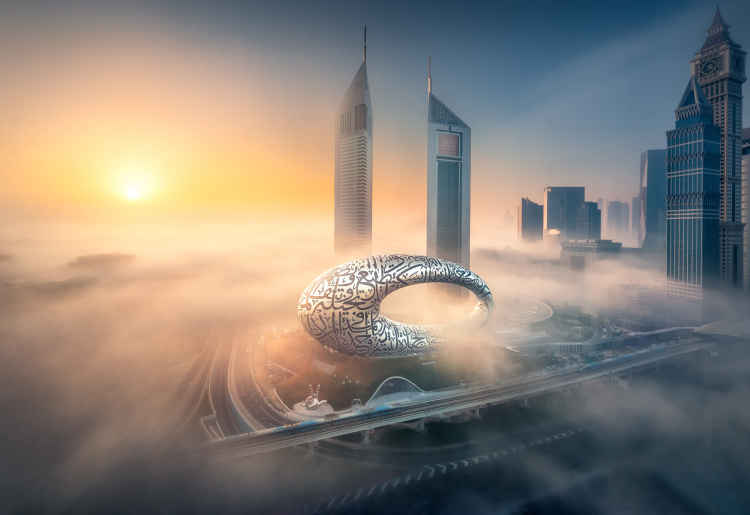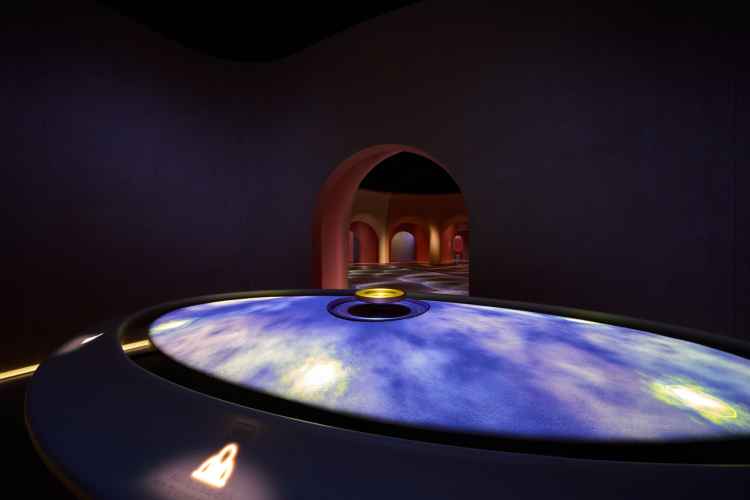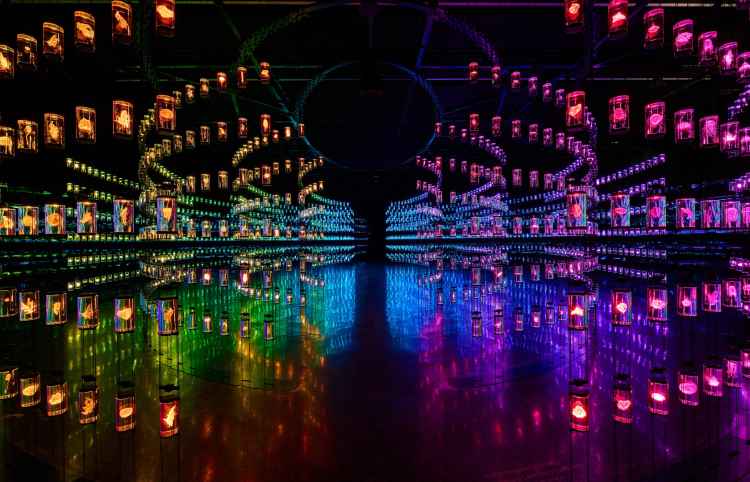Our future is not yet written, which is why the Museum of the Future aims to inspire not inform. Sundar Raman, director of technology at the extraordinary Dubai destination, explains how this was achieved in the context of wider experience design approaches. He talks to Anna Mitchell.
Museums preserve and curate collections; tell stories of creation and achievement; remember triumphs, tragedies and wars; venerate scientists, activists and artists. Even museums focused on the forward-looking disciplines of science and technology often tell stories of invention and discovery from the past.
In short, many museums document and share history. So what happens if you dedicate an entire museum to the future, and how do you tell the story of something that doesn’t yet exist and hasn’t happened?
It’s the task that Dubai’s Museum of the Future, opened February 2022, has taken on with technology playing a role in engaging and creating a dialogue with the museum’s visitors through immersive projections and soundscapes, as well as interactive experiences.

Sundar Raman [pictured above], director of technology at the museum, says: “Our objective was to inspire people and tell a story about where humanity’s aspirations can take us. We’ve provided a foundation, but we also offer the tools for people to explore where humanity will be in 50 years. They can see the sort of things that are possible but also think creatively about other solutions.”
The Museum of the Future achieves this by putting its visitors firmly within the story. Raman explains some of this is achieved with staff that help visitors curate their own journey through the space: “Every area has staff, already in 2071, telling the story of how life is in the future, whether that’s in space, the ecology floor or the wellness area.
“There’s an opportunity for discussion, but also to take people in a direction they didn’t think about. It’s easy to say ‘in 2071 we’ll be doing this’, it’s a whole other thing to say ‘in 2022 you guys are doing it this way, so how could that shape the future in years to come?’. It challenges people to think slightly differently.

“If we give people this perspective, they have the capacity to take it forward. Not every person that comes into the museum is going to, but a small percentage will.”
Raman says the museum has tried very hard to hit all the senses and, rather than just packing the venue with touchscreens, has focused on a wider range of tools to spark interaction.
“We tried very hard to have haptic interactions,” he says. “Even in cases where you could have a touchscreen, our designers put in dials, or toggles or things like that. The textural quality of it is incredibly important. We also use scent; we were even going to do taste… and then Covid happened!

“But we are at a point where that technology is so much easier to use for fresh approaches. Partly thanks to the open hardware movement, you have more capacity to build small scale electronics now. We have more opportunities to find different ways to engage people.”
He continues: “Really, this is multisensorial digital or technical interaction. AV is core to that, but it extends beyond what we traditionally think of as AV. We almost need a different terminology now; you want experience designers or even sense technicians, not AV technicians.”
Raman is well placed to note these shifts in experience design, having contributed for more than a decade to a wealth of prestigious projects including the National September 11th Memorial and Museum, the Cooper Hewitt National Design Museum and the Fashion for Good experience in Amsterdam to name but a few.

“Ten years ago, it was much more complicated to maintain, manage and run a lot of the systems. There are tools that we use [for the Museum of the Future] that didn’t exist or were not widely known about when the project started, and they worked out fabulously well for us.
“For example because of the resolution, some of our video is in the order of a terabyte. Previously the only way to make a change to a terabyte file was to send the entire file over,” Raman says.
Drawing on his development background, Raman started to explore the options of using a source control system. After trialling a number of systems, Raman discovered Plastic SCM.
“It’s an amazing designer-focused versioning and version control system. It allowed us to do these terabyte transfers in no time because every iteration doesn’t change every frame. You are sending it like you would with BitTorrent, changed frames are all that is sent over,” he says.
Raman has a host of other examples where maturity of platforms and software has allowed him and his team to experiment and approach technology deployment and management in a different way. “We use a software approach and a DevOps approach to almost everything we do at Museum of the Future. That allows us to have a small team to manage a very complex site,” he says.
The origins of this fresh approach can be found in Raman’s work and experiences leading up to his role at the Museum of the Future. He describes himself as a creative engineer with a background that spans traditional telecommunications, data-communications, alternative energy systems, social gaming, community media, and interactive experience design.
“Most of the people I know who got into exhibition design, or even museum creative tech, or creative experience design came from other backgrounds, and I think that’s necessary,” he says. “I think four things are key: having some kind of engineering background, some kind or arts background, some kind of enterprise background and start-up experience.”
While excited about the possibilities that engineering and technology can bring to the sector, Raman doesn’t see them as separate from the artistic, creative and human-focused aspects of his work. “Technology should always be a facilitator for creative results, rather than an end in itself,” he says.
“One criticism I’ve had about the Museum of the Future is people saying ‘it’s not futuristic enough’. But our future isn’t about technology, it’s not about robots, it’s about us. And when you tell them that, they kind of get it.”